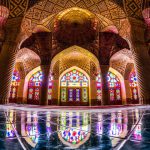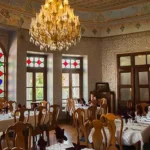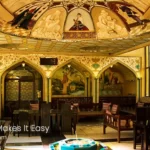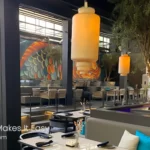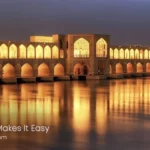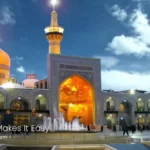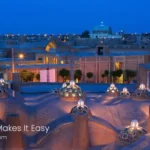Iran Traditional Bazaar tour

Introduction
During your time in Iran, you should not miss the opportunity to walk in Iran’s traditional bazaars! In this article, we are seeking to convince you that your journey in Iran will not be complete without visiting the Iranian traditional bazaars! First, we will explain the social and historical importance of the Iranian traditional bazaars, and then we will introduce you to some of the most incredibly traditional bazaars in Iran, which you can visit during your stay in Iran.
NOTE: Visit Kental Iran Travel’s website if you are interested in visiting any of the numerous Iranian traditional bazaars. Kental Iran Travel is a Tehran-based travel agency that offers the best Iran tour guides in the nation! Kental Iran Travel offers various touring services for tourists with various interests. Check out Kental Iran Travel’s website to see their incredible touring options.
Importance of traditional bazaars in Iran
Historically speaking, the Iranian traditional bazaars used to be the arteries of the Iranian economy. Merchants, rural farmers, horticulturalists, blacksmiths, carpenters, coppersmiths, carpet-weavers, mat-weavers, papermakers, and butchers, among other craftsmen, all have been trading their products in Iran’s traditional bazaars. In fact, even in the age of super-large corporations, the Iranian traditional bazaars have kept their prominence in the Iranian economy.
During the Middle Ages, the Iranian traditional bazaars played a very important role in the Iranian economy and commerce. For example, agricultural products produced in rural areas were transported by local merchants to the cities’ grand bazaars for sale or exchange. International merchants of various backgrounds, including Iranian, European, Arab, Indian, and Chinese merchants, transported their merchandise of various types to the bazaars for either exchange or sale. In fact, the Iranian traditional bazaars were nodes of connection and relationship between numerous communities, foreign and native.
In addition to the economic importance of the Iranian traditional bazaars, there are also very deep cultural and historical aspects of bazaars that we need to consider to fully understand how Iranian culture developed over time. As mentioned before, the Iranian traditional bazaars in the cities across Iran were places in which people from all walks of life gathered: rural villagers, nomadic representatives, urban craftsmen, and merchants gathered in bazaars to discuss, exchange and make deals with one another. Over a long period of time, “Iranian culture” and “Iranian identity” emerged out of the bazaars and included almost all of the people who lived in the Iranian plateau. Although this claim is arguable, no one can deny the role that the traditional bazaars played in the creation of a shared identity among Iranians.
If you are curious about the Iranian traditional bazaars, you should contact Kental Iran Travel, a travel agency in Iran that offers the best Iran tour guides in the country. Kental Iran Travel also offers the most affordable Iran touring services with the highest quality in the nation. Check Kental Iran Travel’s website to see their touring services.
Iranian traditional bazaars
Now that we have explained the importance of the Iranian traditional bazaars in understanding Iranian culture, you may want to visit some of the oldest and biggest Iranian traditional bazaars; below we will introduce some of them.
Grand Bazaar of Tehran
Located in central Tehran, the Grand Bazaar of Tehran is one of the biggest bazaars in Iran. Tens of shopping centers and hundreds of smaller shops constitute the largest bazaar of the capital city of Tehran. The hustle and bustle of the Grand Bazaar of Tehran will leave you speechless and keep you hanging around in every corner of this mesmerizing social environment at the heart of the capital! Even if you are not planning to buy anything, your head will be always bent towards one side, looking at the colorful shops that are beautifully built beside each other along both sides of the numerous halls of the Grand Bazaar of Tehran!
Figure 1 Grand Bazaar of Tehran
Figure 2 The Map of the Grand Bazaar of Tehran
Tajrish Bazaar in Tehran
Another large and important bazaar in Tehran is located in the north of Tehran and called the Bazaar of Tajrish. Despite being smaller than the Grand Bazaar of Tehran, the Bazaar of Tajrish is a roofed construction and connects two big neighborhoods of Iran’s capital, Sarpol and Tajrish. Like the vast majority of the Iranian traditional bazaars, the Bazaar of Tajrish has a mosque which signifies the cultural importance of the bazaar.
Figure 3 The beautiful Bazaar of Tajrish
Bazaar of Isfahan
Historically speaking, the Bazaar of Isfahan has been, by far, the most famous traditional bazaar of Iran. Being modeled on another great Bazaar, the Qeysaria Bazaar of Laar near the Persian Gulf, the Bazaar of Isfahan has attracted the attention of numerous European and non-European visitors to Isfahan since, at least, the seventeenth-century.
The name “Bazaar of Isfahan” is collectively referred a long series of bazaars constructed from as early as the 11th-century during the time of the Seljuk Empire up until the early 20th-century. It connects various mosques, squares, and schools, each belonging to a historical period, through numerous traditional roofed corridors. Words cannot easily describe the Bazaar of Isfahan, and you should walk in its roofed hallways to figure its magnificence out for yourself!
Figure 4 Bazaar of Isfahan
Figure 5 Bazaar of Isfahan – A silversmith working in Qeysarya Bazaar of Isfahan
Vakil Bazaar in Shiraz
Located in the south of the country, Shiraz’s largest traditional bazaar is Vakil Bazaar which was built in the 11th-century and expanded in the 18th-century. Visiting the most beautiful and historically significant places of Shiraz without walking through the corridors of the Vakil Bazaar will not be complete. The Vakil bazaar is a roofed construction with ten meters of height and with wider corridors compared to most other traditional bazaars in Iran. The Vakil Bazaar is specially the best place in southern Iran for buying high-quality Persian rugs, copper handicrafts, and antiques.
Figure 6 Vakil Bazaar in Shiraz
Conclusion
In this article we explained why the traditional bazaars in Iran have unique socio-cultural importance and why it is necessary to understand the concept of bazaar to fully better grasp Iranian culture. We also introduced a few of the most famous traditional bazaars in Iran, including two in the capital city of Tehran, one in Isfahan, and another one in Shiraz.
If you feel determined to visit Iranian traditional bazaars, you should contact Kental Iran Travel, a Tehran-based travel agency that offers the best Iran tour guides in the nation. Kental Iran Travel also offers the most affordable Iran touring services with the highest quality. Check Kental Iran Travel’s website to see their touring services.




